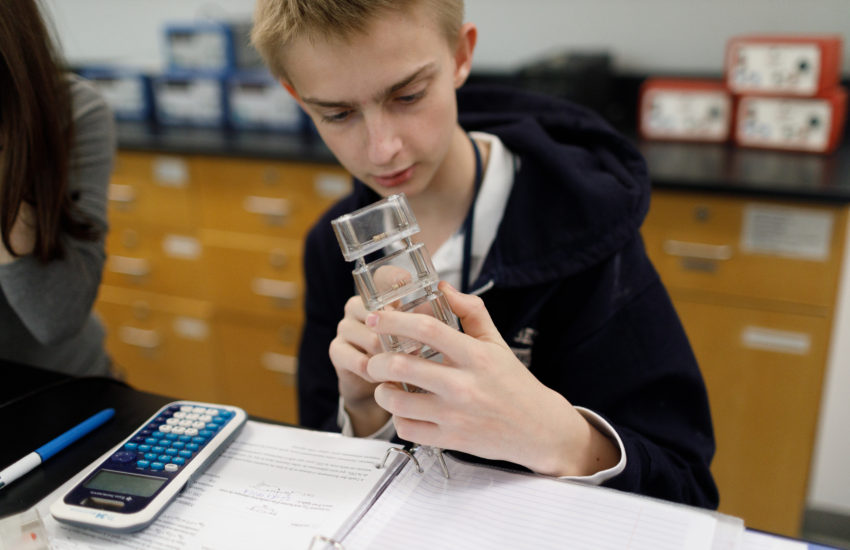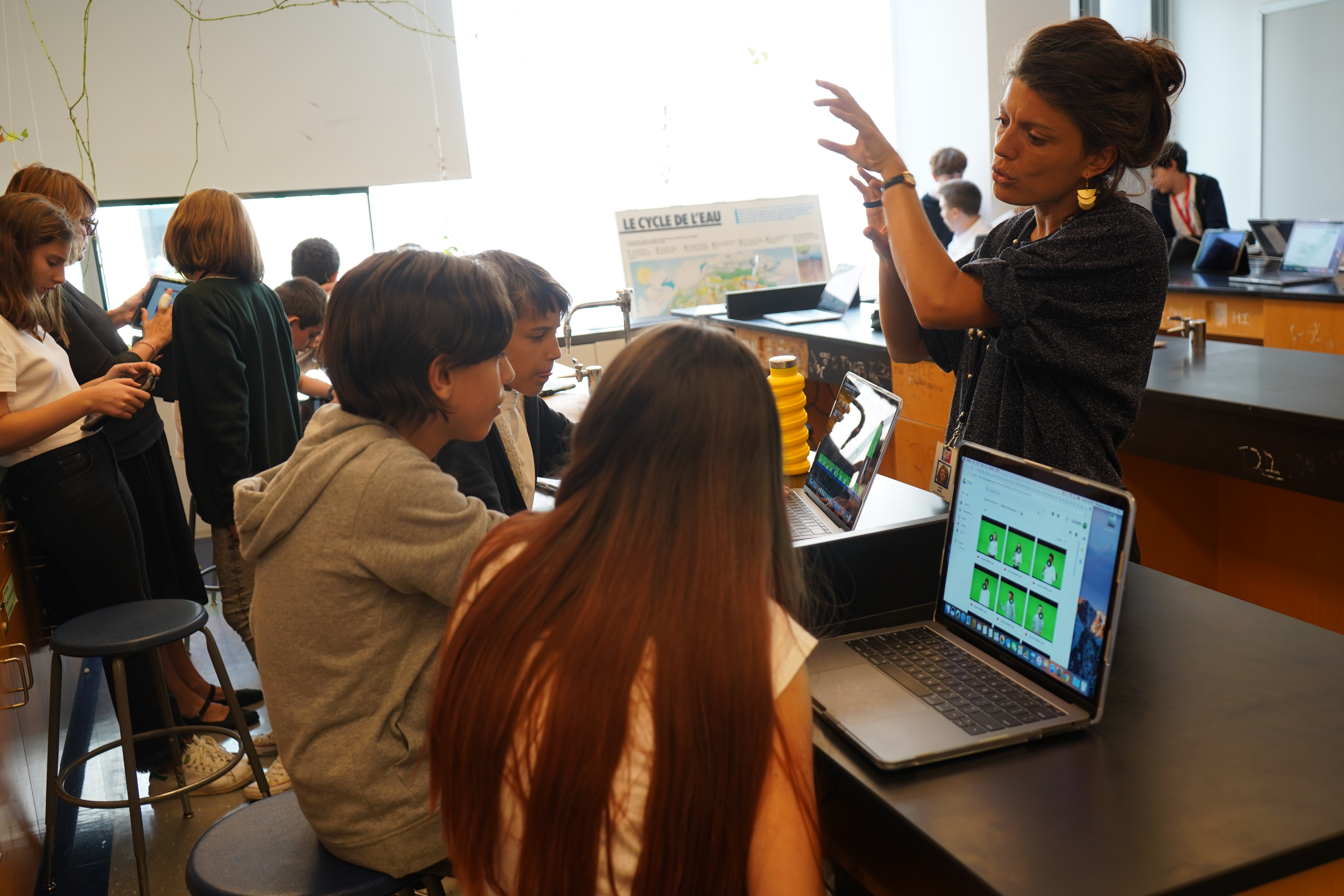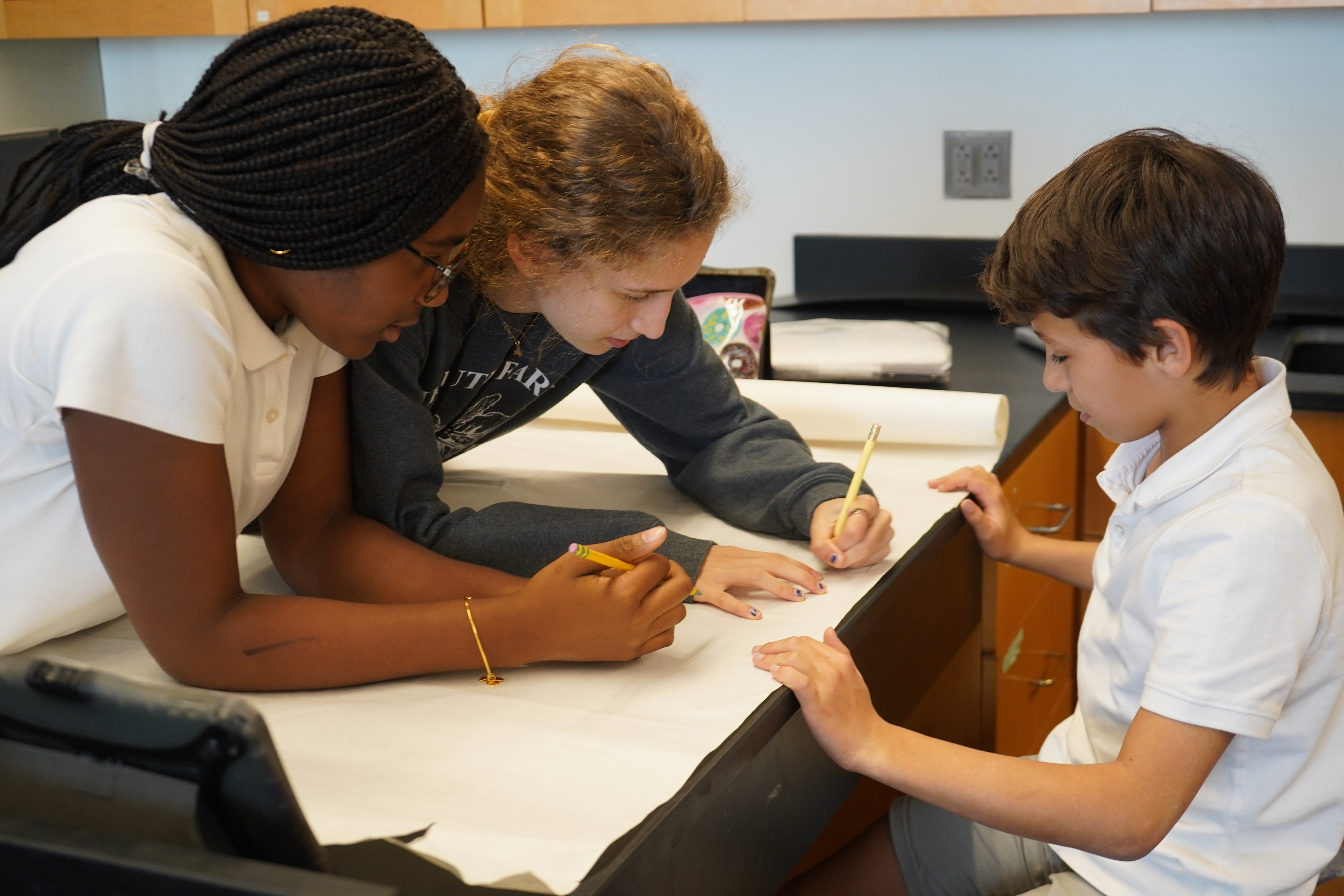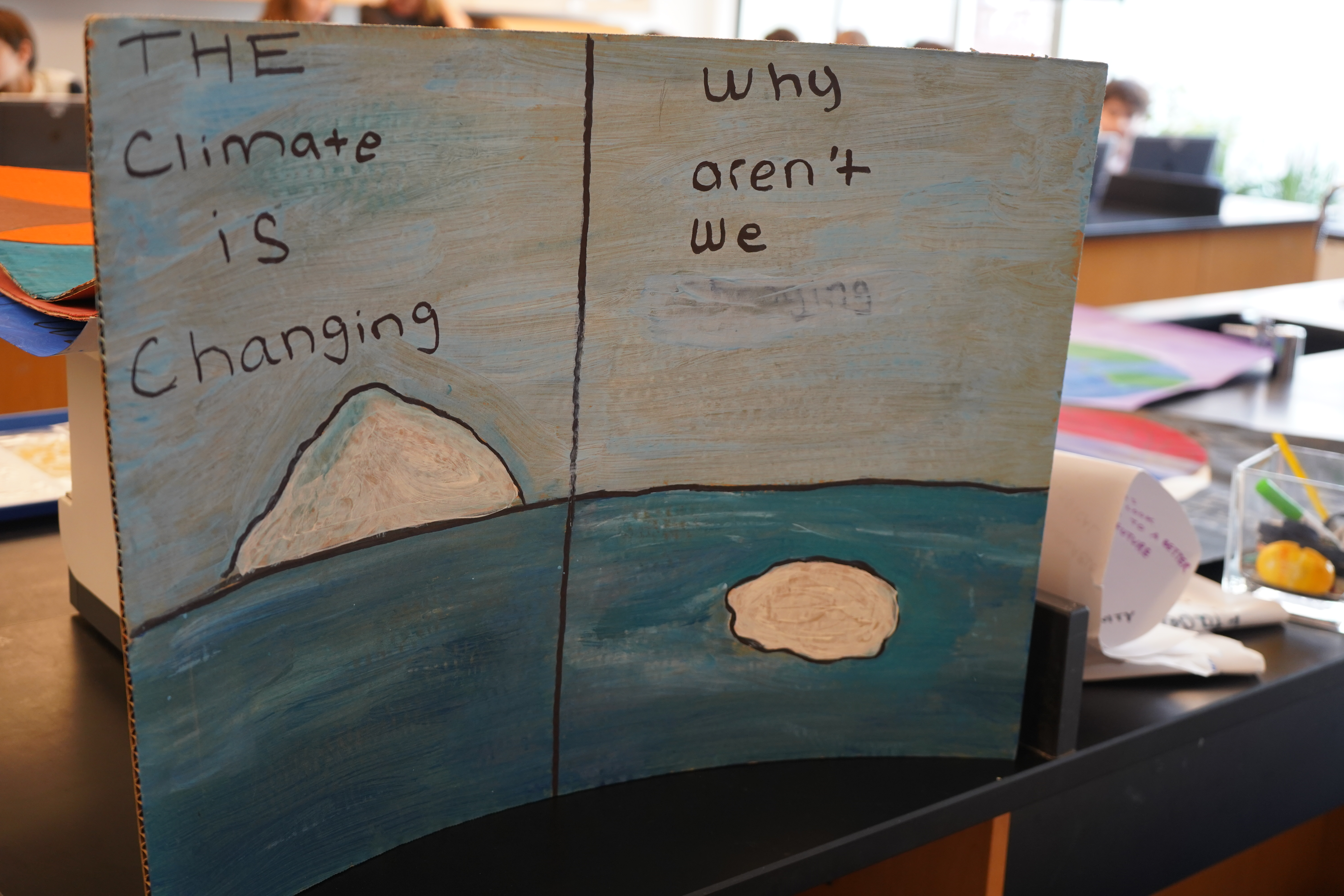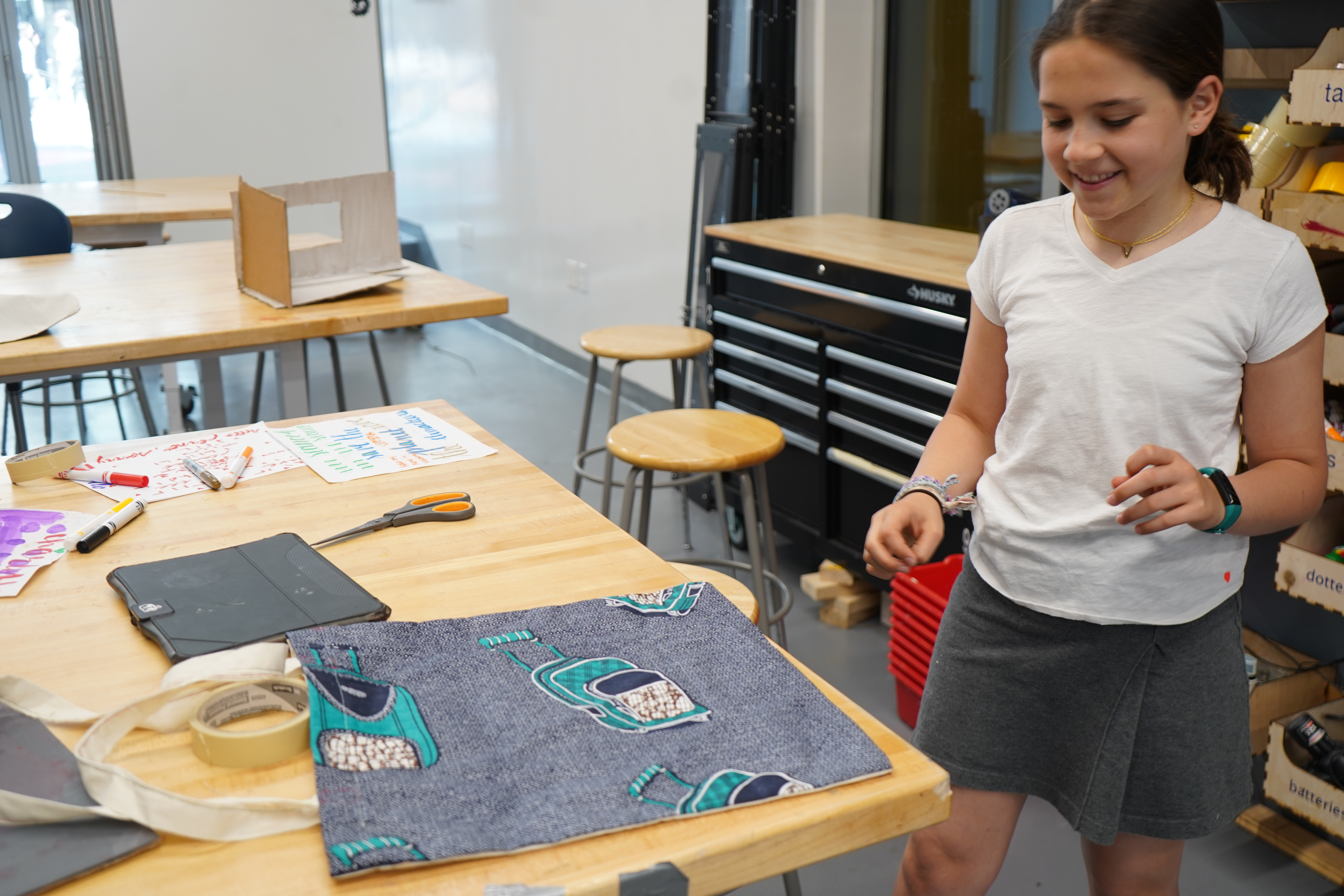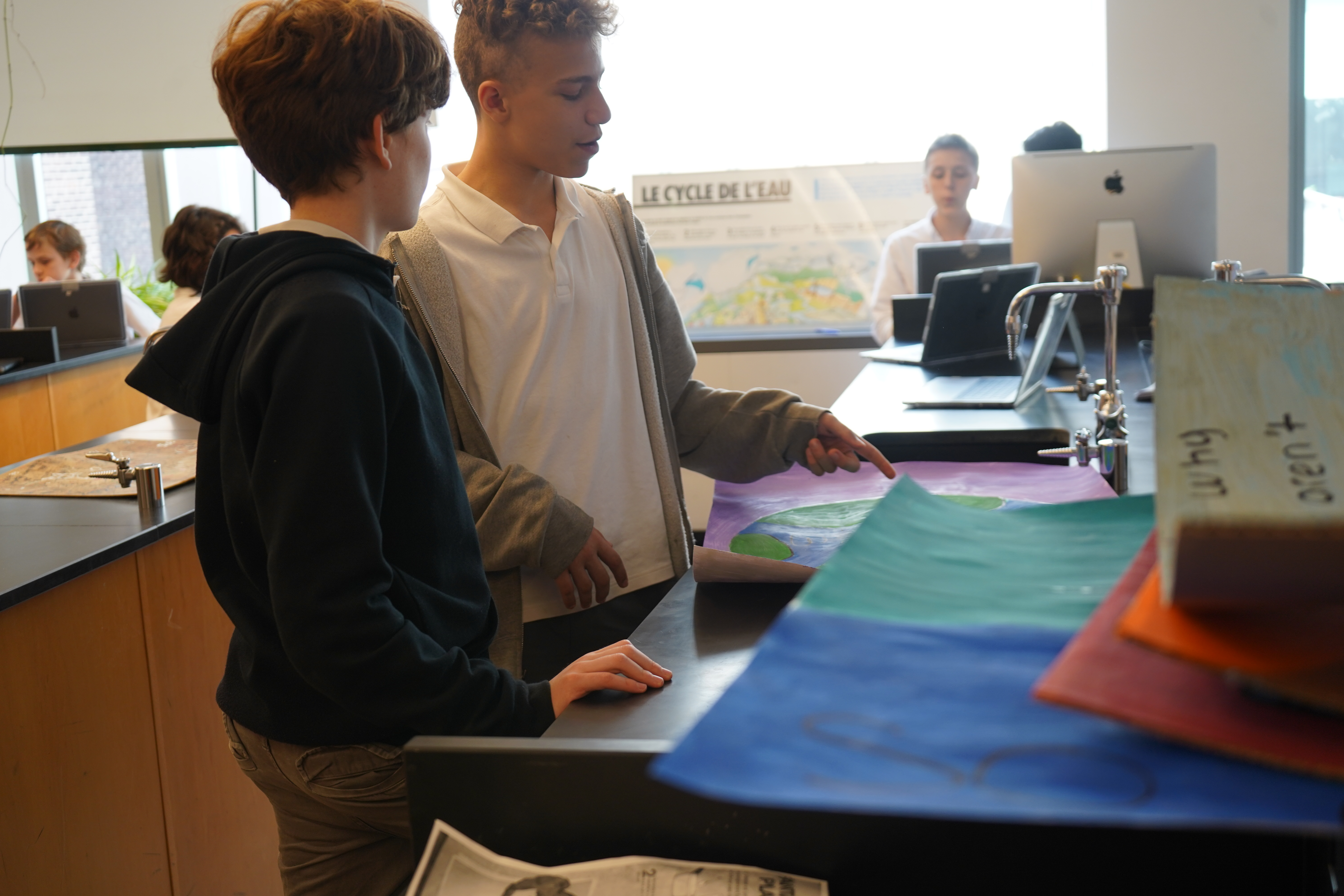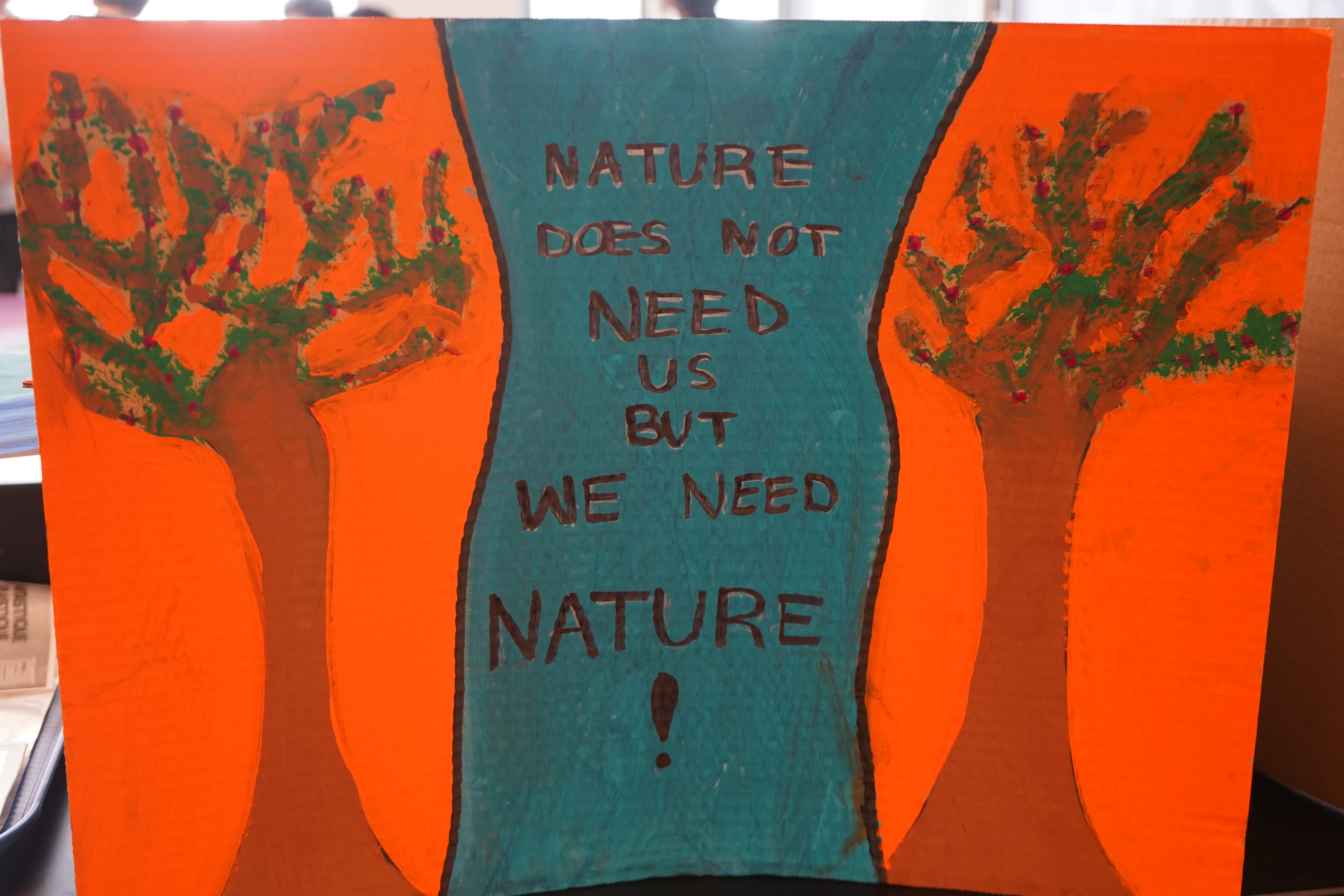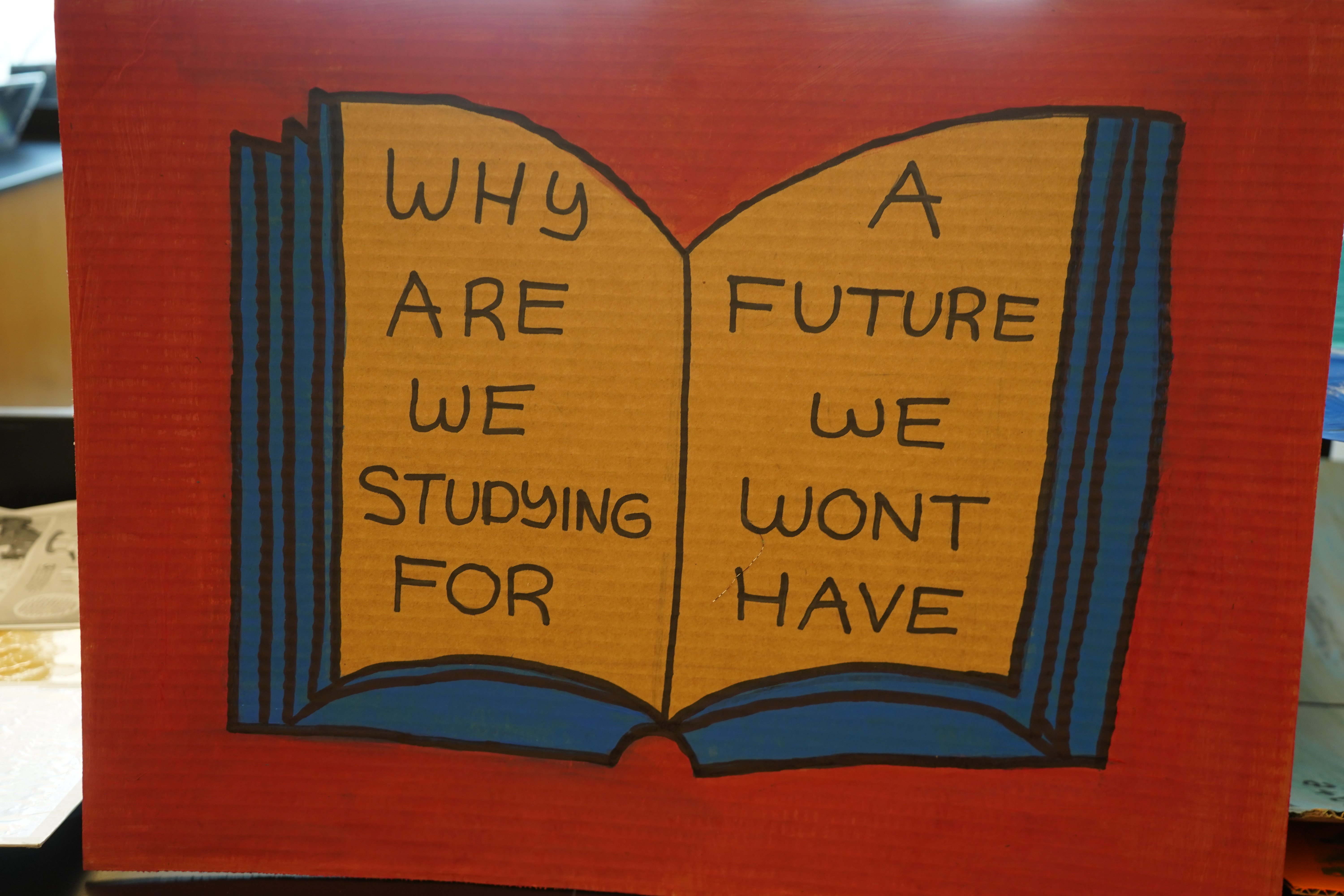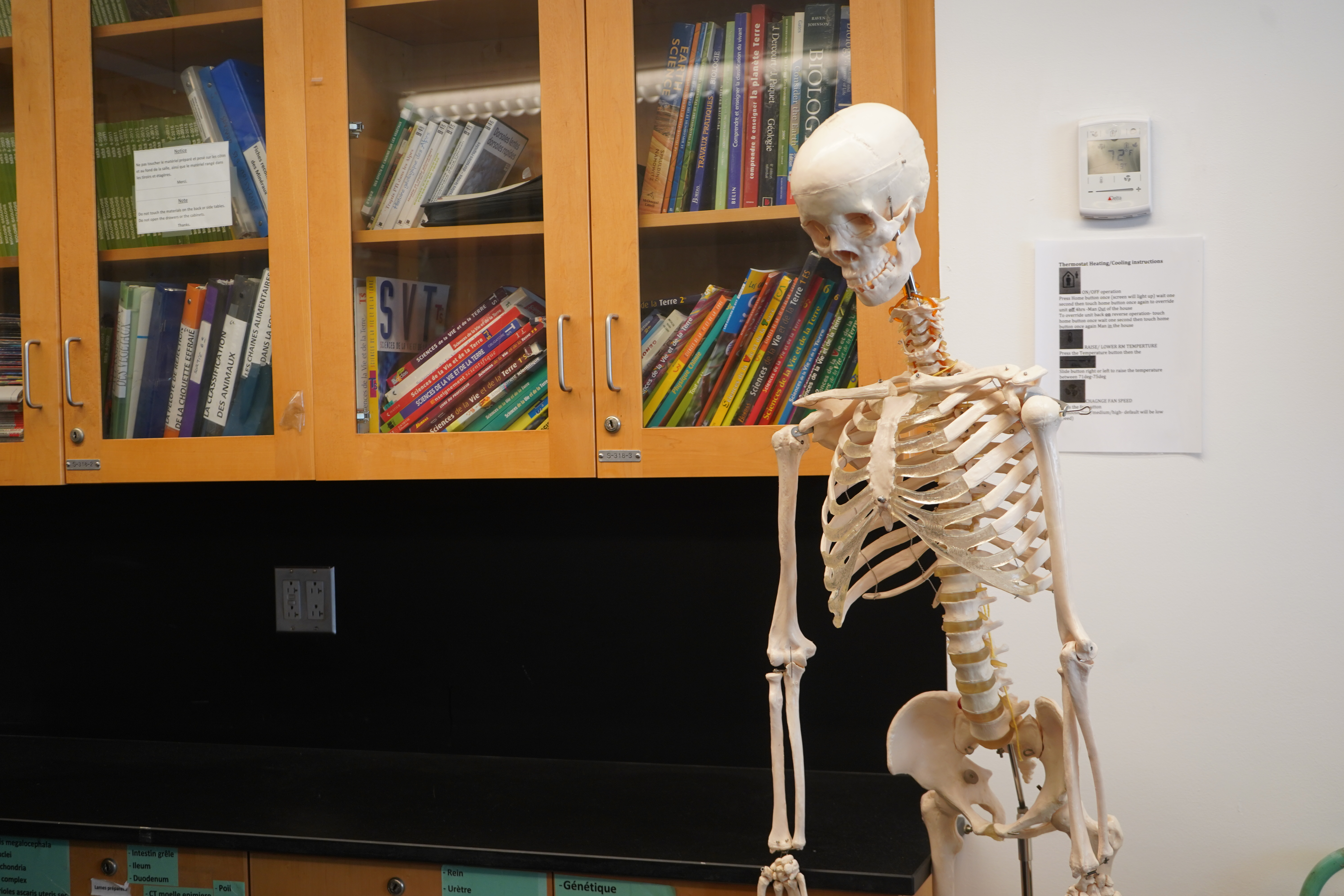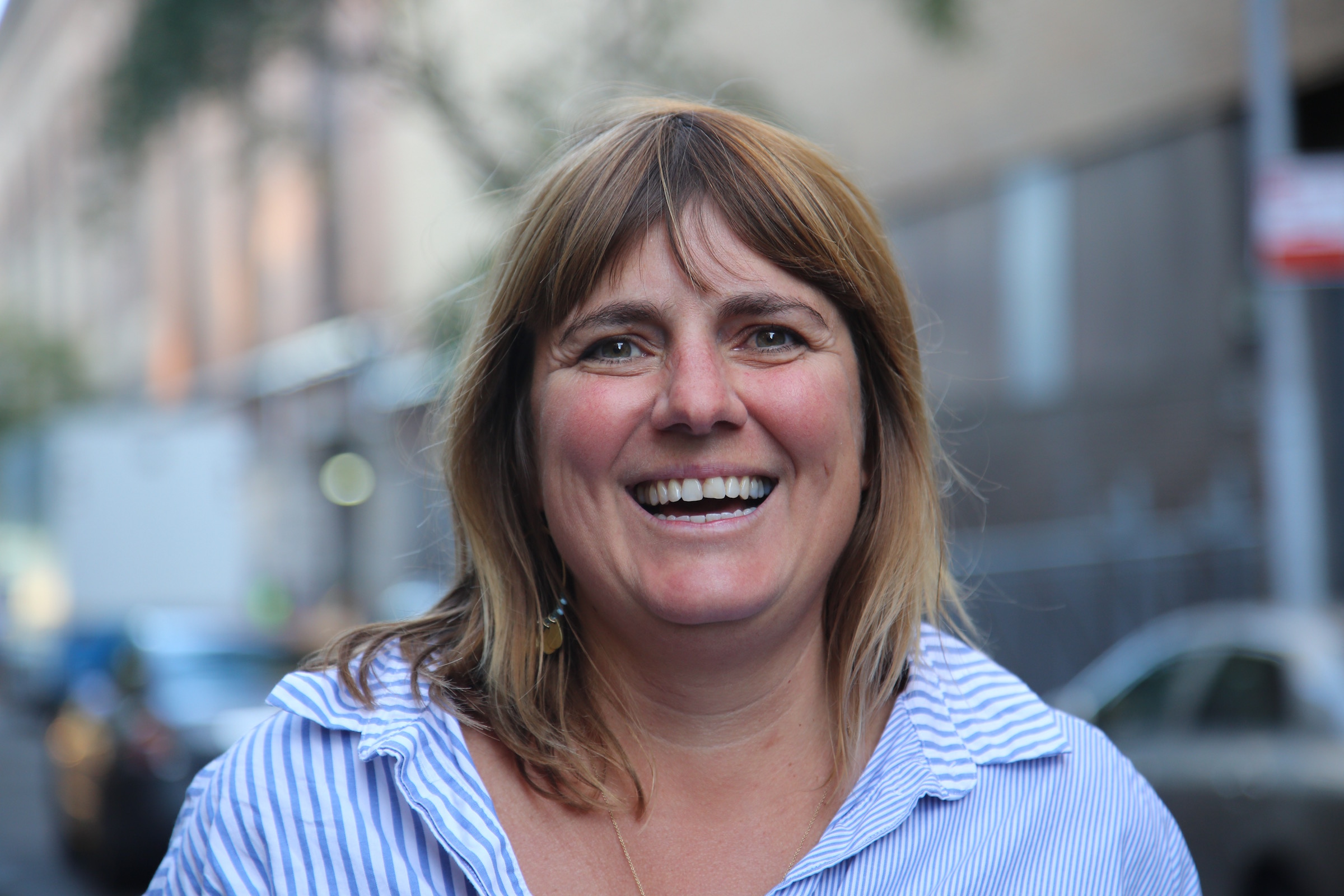On Friday, March 15, several Lycée students joined the protests in front of the United Nations as part of the global strike for climate change. The movement started last year thanks to a 16-year-old girl in Sweden, Greta Thunberg, who began skipping class on Fridays to instead talk to policy makers. Young people around the world have since rallied around the cause—notably several enterprising 8th-grade students from right here in the Lycée’s own Science Department.
Inspired by a project in France called Météo à L’Ecole, the Lycée’s Science Department has developed a very popular Weather Parcours, a semester-long class which combines field research with data mapping, analysis, and, (now), civic engagement.
First, under the guidance of science teachers Camille Barré and Julie Rieu, the students installed a weather station on the second-floor courtyard of the Lycée building. The machine tracks data about global fluctuations in temperature and humidity everywhere in the world. Students have been carefully collecting and recording that data all semester.
Next, students compared this weather information against government archival data from 1950. From this, they were able to look to the future, and predict weather patterns that might happen in the year 2050. Unfortunately, they discovered a huge amount of evidence that global temperatures will rise by 2 degrees celsius within the next 30 years.
“It was incredible to see how clear the data was,” says Ms. Rieu.

The students’ findings are confirmed by climate experts, including a report from the United Nations warning that sea levels will rise, storm patterns will fluctuate, and food production will be threatened if we do not act soon. “Climate Change is the defining issue of our time, and we are at a defining moment,” reads the United Nations’ official manifesto on the topic.
The students realized that they wanted to do something. Since they are only 8th graders, they started small—by looking at the Lycée and seeing what can be changed here. The school building is LEED certified, and every department recycles responsibly—from food in the cafeteria to printer paper in the library. Still, there are always more daily habits we can change.
“Students can help broadcast the message to their family and friends,” says Ms. Rieu. “They are the hope, they are the future.”
Since the students are only in 8th grade, they are mainly focused on learning the value of the scientific method and the importance of hard facts when exploring the natural world. But at least a few of them have become inspired to continue to work on impacting climate discussions in a meaningful way. This is how they came to be involved with the Climate March, and a few students plan on attending another in September.
The slogans on their signs are pretty catchy!
About the Author :
Camille Barré arrived at the Lycée Français de New York in 2012. She is an Earth and Life Science teacher. After spending her childhood and adolescence in Tchad, Reunion and Guadeloupe, Camille moved to Paris to study biology at the Ecole d’Ingénieur en Agronomie de Paris-Grignon, receiving a graduate degree (DEA) in biology, diversity and adaptation of cultivated plants. She then moved to Brittany to study the impact of farming on water quality, writing a doctoral thesis at the Ecole Nationale Supérieure Agronomique de Rennes. Three years after completing her thesis, she returned to Paris and founded an organization to distribute local organic vegetables.

